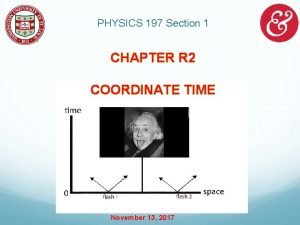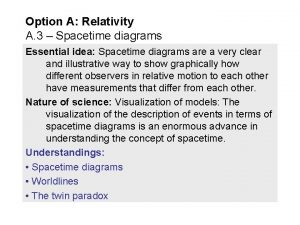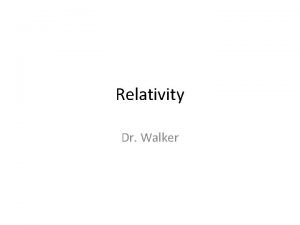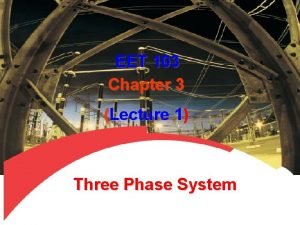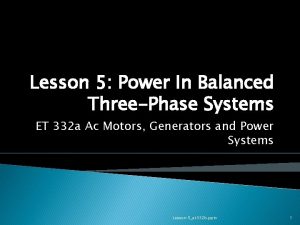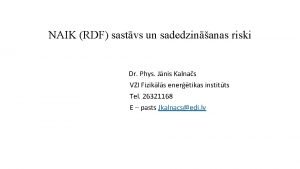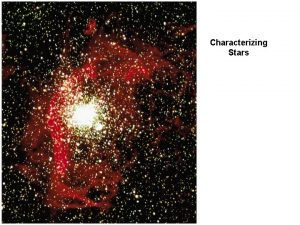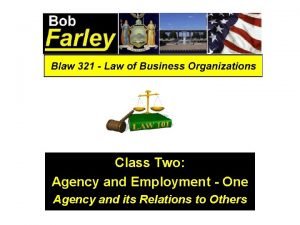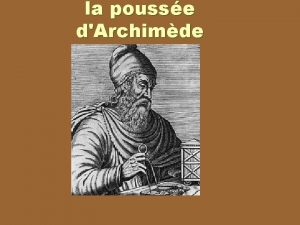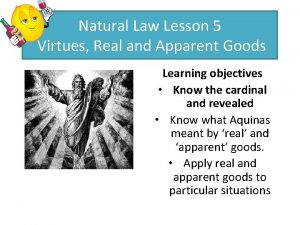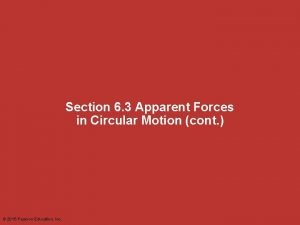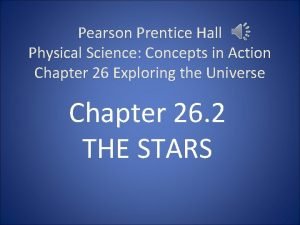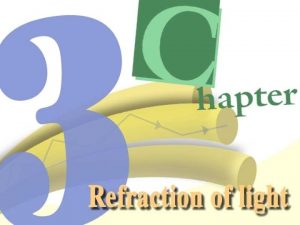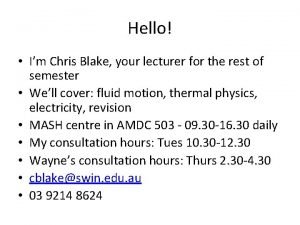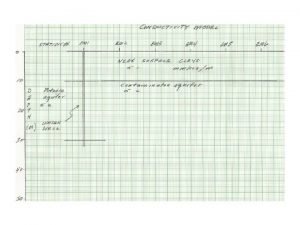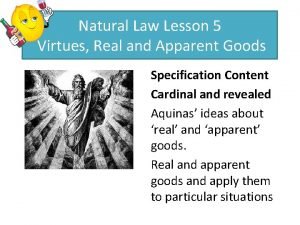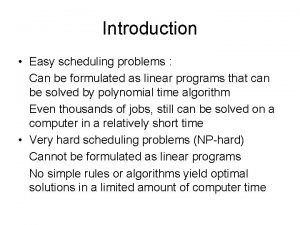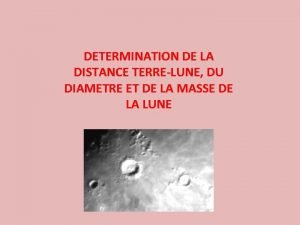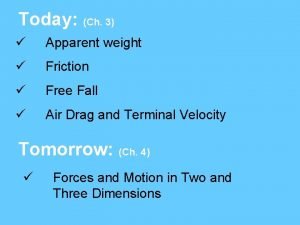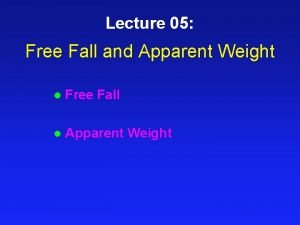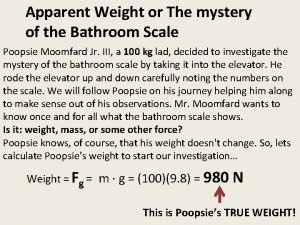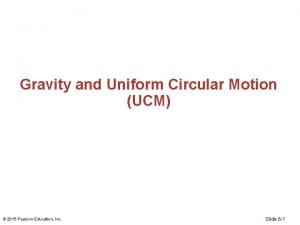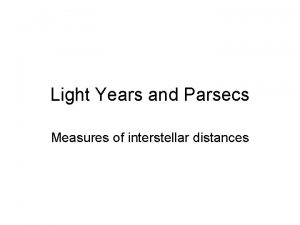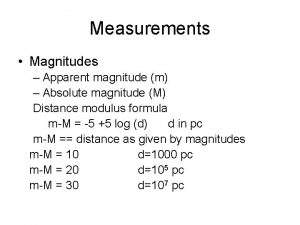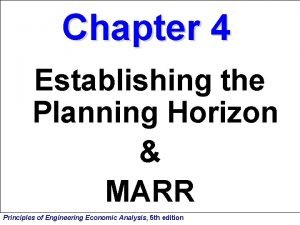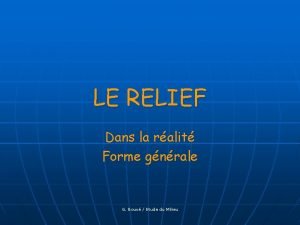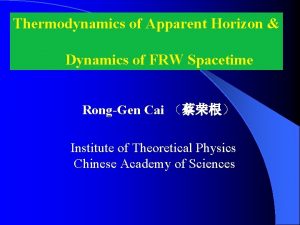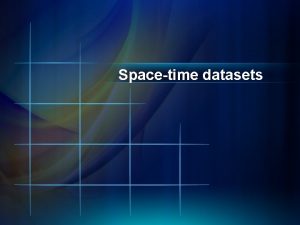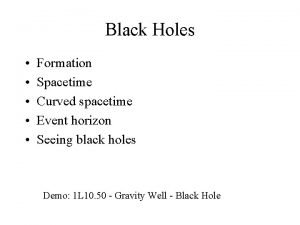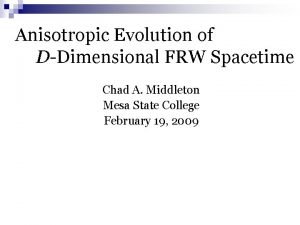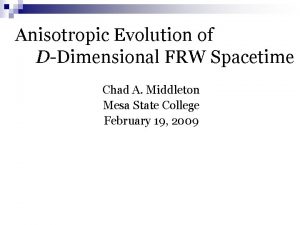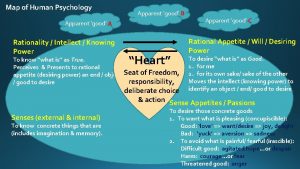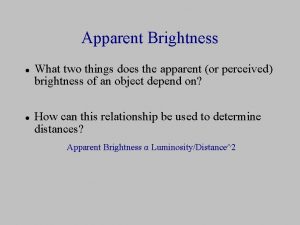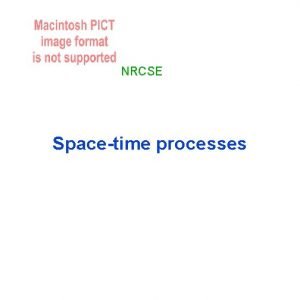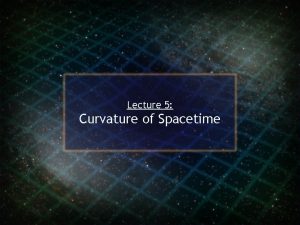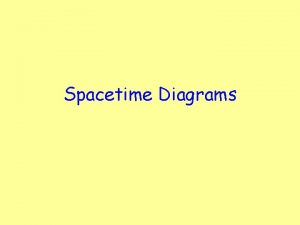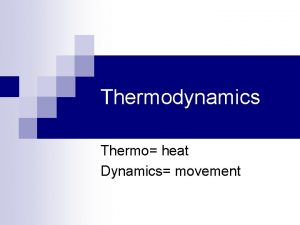Thermodynamics of Apparent Horizon Dynamics of FRW Spacetime






















































- Slides: 54

Thermodynamics of Apparent Horizon & Dynamics of FRW Spacetime Rong-Gen Cai (蔡荣根) Institute of Theoretical Physics Chinese Academy of Sciences

Einstein’s Equations (1915): {Geometry matter (energy-momentum)}

Thermodynamics of black holes : Schwarzschild Black Hole: Mass M horizon More general: Kerr-Newmann Black Holes M, J, Q No Hair Theorem

On the other hand, for the de Sitter Space (1917): +I Gibbons and Hawking (1977): Cosmological event horizons I-

Schwarzschild-de Sitter Black Holes: Black hole horizon and cosmological horizon: First law:

Thermodynamics of black hole: (S. Hawking, 1974, J. Bekenstein, 1973) First law:d. M =Td. S Questions: why? (T. Jacobson, 1995)

First law: d. E =Td. S Dynamics of spacetime: Two ansatz in FRW: (R. G. Cai and S. P. Kim, JHEP (2005))

a) From the First Law to the Friedmann Equations Friedmann-Robertson-Walker Universe: 1) k = -1 open 2) k = 0 flat 3) k =1 closed

Friedmann Equations: Where:

Our goal : Some related works: (1) A. Frolov and L. Kofman, JCAP 0305 (2003) 009 (2) Ulf H. Daniesson, PRD 71 (2005) 023516 (3) R. Bousso, PRD 71 (2005) 064024


Apparent Horizon in FRW Universe :

Apply the first law to the apparent horizon: Make two ansatzes: The only problem is to get d. E

Suppose that the perfect fluid is the source, then The energy-supply vector is: The work density is: (S. A. Hayward et al. , 1997, 1998) Then, the amount of energy crossing the apparent horizon within the time interval dt

By using the continuity equation: (Cai and Kim, JHEP 0502 (2005) 050 )

Higher derivative theory: Gauss-Bonnet Gravity Gauss-Bonnet Term:

Black Hole Solution: Black Hole Entropy: (R. Myers, 1988, R. G. Cai, 2002, 2004)

Ansatz:

This time: This also holds for more general Lovelock gravity!

b) Friedmann equation and the first law of thermodynmaics Consider a FRW universe Apparent horizon And its surface gravity which is defined by

Consider the Einstein field equations with perfect fluid One has the Friedmann equation and the continuity equation Multiplying both side hands by a factor

Using the definition One has Now consider the energy inside the apparent horizon (Unified first law of thermodynamics, Hayward, 1998, 1999)

The case with a Gauss-Bonnet term? Black hole has an entropy of form Consider the Friedmann equation in GB gravity

Once again, multiplying a factor with Defining It also holds for Lovelock case !

c) Thermodynamics of apparent horizon in brane world scenario (RGC and L. M. Cao, hep-th/0612144) ( A. Sheykhi, B. Wang and R. G. Cai, hep-th/0701198) (A. Sheykhi, B. Wang and RGC, hep-th/0701261) The unified first law: ( S. Hayward, 1998, 1999) Projecting this along a trapping horizon, one can get the first law of Thermodynamics for a dynamical black hole

For a non-Einstein theory, one can do as follows. Then one has Using the relation one could obtain the expression of horizon entropy. (RGC and L. M. Cao, gr-qc/0611071. )

Two motivations to study thermodynamics of AH in brane world scenario: (1) (2) d. E = T d. S + W d. V ? S = ? (T. Shiromizu, K. I. Maeda and M. Sasaki, PRD, 2000)

The effective equations on an (n-1)-brane: In the RSII model

Consider a FRW universe on the brane and suppose the matter on the brane is a perfect fluid with then

The Friedmann equations and continuity equation:

where One has

(RGC and L. M. Cao, hep-th/0612144)

Some remarks: 1) In the limit, 2) In the limit,

3) The first law of thermodynamics for the apparent horizon 4) When the bulk Weyl tensor does not vanish?

Bulk geometry and area formula of horizon entropy We obtain

The apparent horizon for a fixed z,

The function has a simple zero root at z_{max},

The horizon area And the entropy

d) Corrected entropy-area relation and modified Friedmann equation RGC, L. M. Cao and Y. P. Hu JHEP 0808, 090 (2008) Corrected entropy-area relation: Friedmann equations Loop quantum cosmology: Entropy formula

From corrected entropy-area relation to modified Friedmann equations For a FRW universe with a perfect fluid:

The amount of energy crossing the apparent horizon within dt where A is the area of the apparent horizon. Assume the temperature and the Clausius relation

Bouncing universe? Loop quantum cosmology

More general case: further

From modified Friedmann equation to corrected entropy-area relation Entropy formula The unified first law The first law of apparent horizon (R. G. Cai and L. M. Cao, hep-th/0612144)

Rewriting the modified Friedmann equation

It is easy to show Compare with

e) Hawking radiation of apparent horizon in FRW universe We know Hawking radiation is always associated with event horizon of spacetime: (1) Black hole, (2) de Sitter space, (3) Rindler horizon Question: how about apparent horizon in FRW?

when k=0, it is quite similar to the Painleve-de Sitter metric (M. Parikh, PLB 546, 189 (2002) There is a Kodama vector:

Now let us consider a particle with mass m in FRW universe. The Hamilton-Jacobi equation: By use of the Kodama vector, one could define Then the action:

Consider the incoming mode, the action has a pole at the apparent horizon (Parikh and Wilczek, 2000)

In WKB approximation, the emission rate Gamma is the square of the tunneling amplitude: The emission rate can be cast in a form of thermal spectrum The end (R. G. Cai et al. ar. Xiv: 0809. 1554 [hep-th] )

f) Conclusions 1) From d. Q=Td. S to Friedmann equations, here S=A/4 G and 2) 2) The Friedmann equation can be recast to a universal form 3) There is a Hawking radiation for the apparent horizon in FRW univers 4) In Einstein gravity and Lovelock gravity, the expression of S has a same form as the black hole entropy 5) In brane world scenario, that form still holds, and we can obtain an expression of horizon entropy associated with apparent horizon, and expect it also holds for brane world black hole horizon.

My papers on this subject: 1) RGC and S. P. Kim, JHEP 0502, 050 (2005) 2) M. Akbar and RGC, PLB 635,7 (2006); PRD 75, 084003 (2007); PLB 648, 243 (2007) 3) RGC and L. M. Cao, PRD 75, 064008 (2007); NPB 785, 135 (2007) 4) A. Sheykhi, B. Wang and RGC, NPB 779, 1 (2007), PRD 76, 023515 (2007) 5) R. G. Cai, L. M. Cao and Y. P. Hu, JHEP 0808, 090 (2008) 6) R. G. Cai, Prog. Theor. Phys. Suppl. 172: 100 -109, 2008. 7) R. G. Cai, L. M. Cao and Y. P. Hu, ar. Xiv: 0809. 1554 Hawking Radiation of Apparent Horizon in a FRW Universe

Thank You
 Frw awards
Frw awards De sitter spacetime
De sitter spacetime Spacetime coordinates review
Spacetime coordinates review Twin paradox spacetime diagram
Twin paradox spacetime diagram Time dilation
Time dilation Hepatic clearance
Hepatic clearance Instrumental learning vs classical conditioning
Instrumental learning vs classical conditioning Apparent bulk density
Apparent bulk density In a triangle connected source feeding a y connected load
In a triangle connected source feeding a y connected load Apparent power formula
Apparent power formula Kalnačs
Kalnačs Apparent magnitude
Apparent magnitude Apparent density
Apparent density Total internal reflection in diamond
Total internal reflection in diamond 75 kg man
75 kg man Lingering apparent authority
Lingering apparent authority Poussee archimede
Poussee archimede Site:slidetodoc.com
Site:slidetodoc.com Real and apparent goods examples
Real and apparent goods examples Apparent forces in circular motion
Apparent forces in circular motion Dbtselfhelp
Dbtselfhelp Apparent frequency formula
Apparent frequency formula The real lesson 21
The real lesson 21 A few
A few Apparent brightness def
Apparent brightness def Prismatic periscope
Prismatic periscope Buoyancy law
Buoyancy law How to find apparent weight
How to find apparent weight Pharmacology basics
Pharmacology basics Resistivity unit
Resistivity unit Example of real and apparent good
Example of real and apparent good Apparent tardiness cost
Apparent tardiness cost Diamètre apparent
Diamètre apparent Apparent weight
Apparent weight Apparent weight in free fall
Apparent weight in free fall Apparent
Apparent Apparent competition
Apparent competition Ecologyu
Ecologyu Apparent shift in measurement
Apparent shift in measurement A physics textbook swings back and forth as a pendulum
A physics textbook swings back and forth as a pendulum Apparent magnitude equation
Apparent magnitude equation Slit junction
Slit junction Real limits statistics
Real limits statistics Mc call festoons
Mc call festoons Apparent vs absolute magnitude
Apparent vs absolute magnitude Competitive exclusion example
Competitive exclusion example Contour of gingiva in gingivitis
Contour of gingiva in gingivitis Apparent weight formula
Apparent weight formula Horizon symbolic meaning
Horizon symbolic meaning Topmost mineral horizon
Topmost mineral horizon Trashketball review game
Trashketball review game Count the day lost
Count the day lost Horizon 2020 smart cities
Horizon 2020 smart cities For one-shot investments, the planning horizon is equal to
For one-shot investments, the planning horizon is equal to Ligne d'horizon ondulée
Ligne d'horizon ondulée


